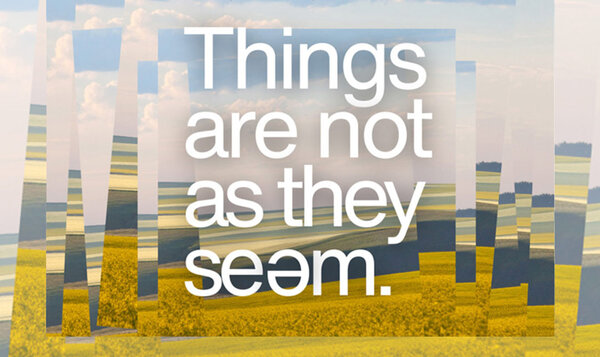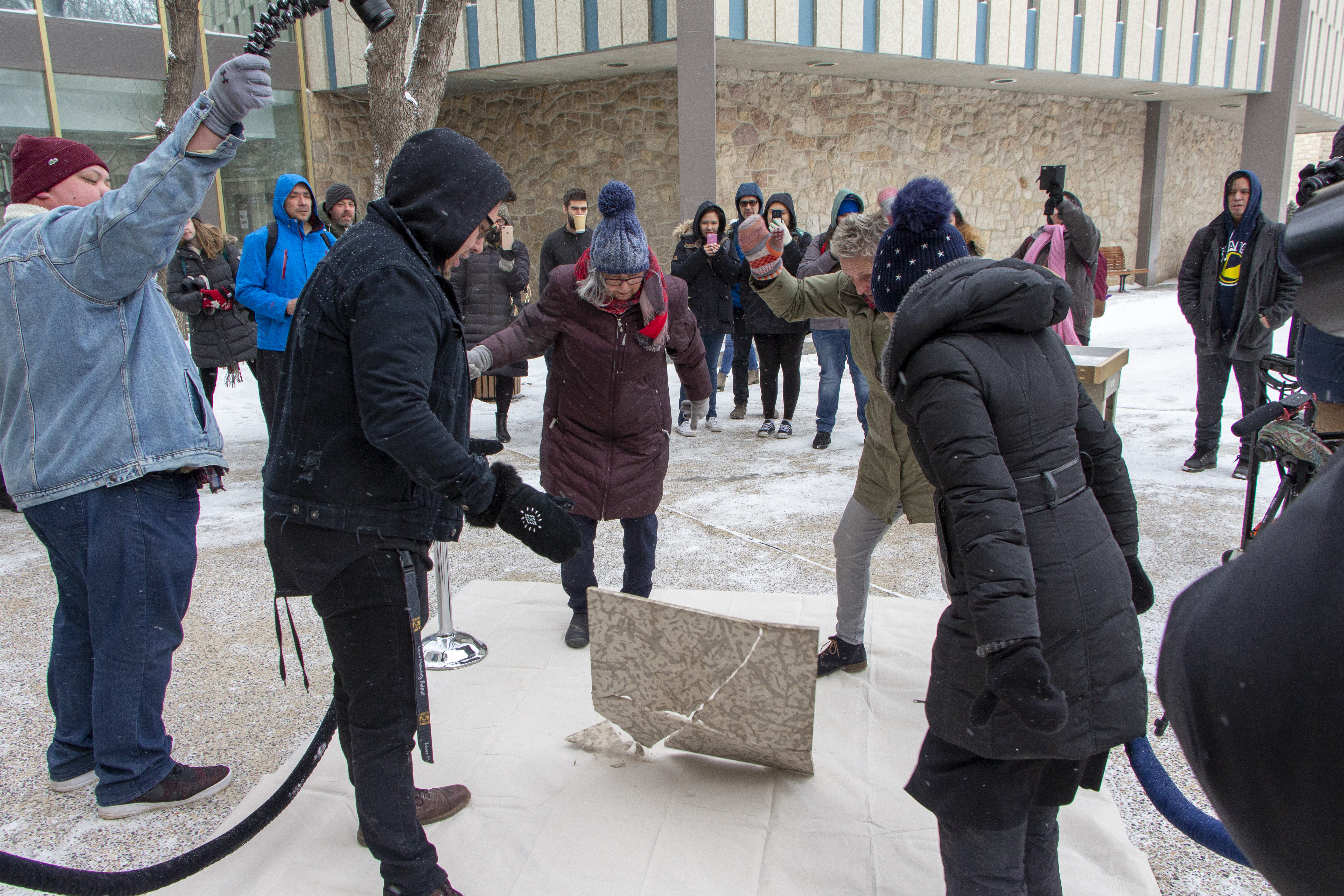
Interactive USask art project addresses decolonization and Indigenization
Project by Ruth Cuthand (BFA’83, MFA’92) and Vanessa Hyggen (BA’17) combines beadwork and architectural stone
By Shannon Boklaschuk
The University of Saskatchewan (USask) is inviting participants to join two alumni in the live creation of an innovative art piece that aims to spark conversations about decolonization and Indigenization.
During Indigenous Achievement Week at USask, which runs from Feb. 4 – 8, 2019, renowned Plains Cree artist Ruth Cuthand (BFA’83, MFA’92) and Woodlands Cree artist Vanessa Hyggen (BA’17) will work on a project called mîkisak ikwa asiniyak ǀ Beads and Stone ǀ Lii rasaad aykwa lii rosh (written in Cree, English and Michif). Using beadwork and architectural stone, their artwork will blend materials and traditions to map emergent processes of Indigenization.
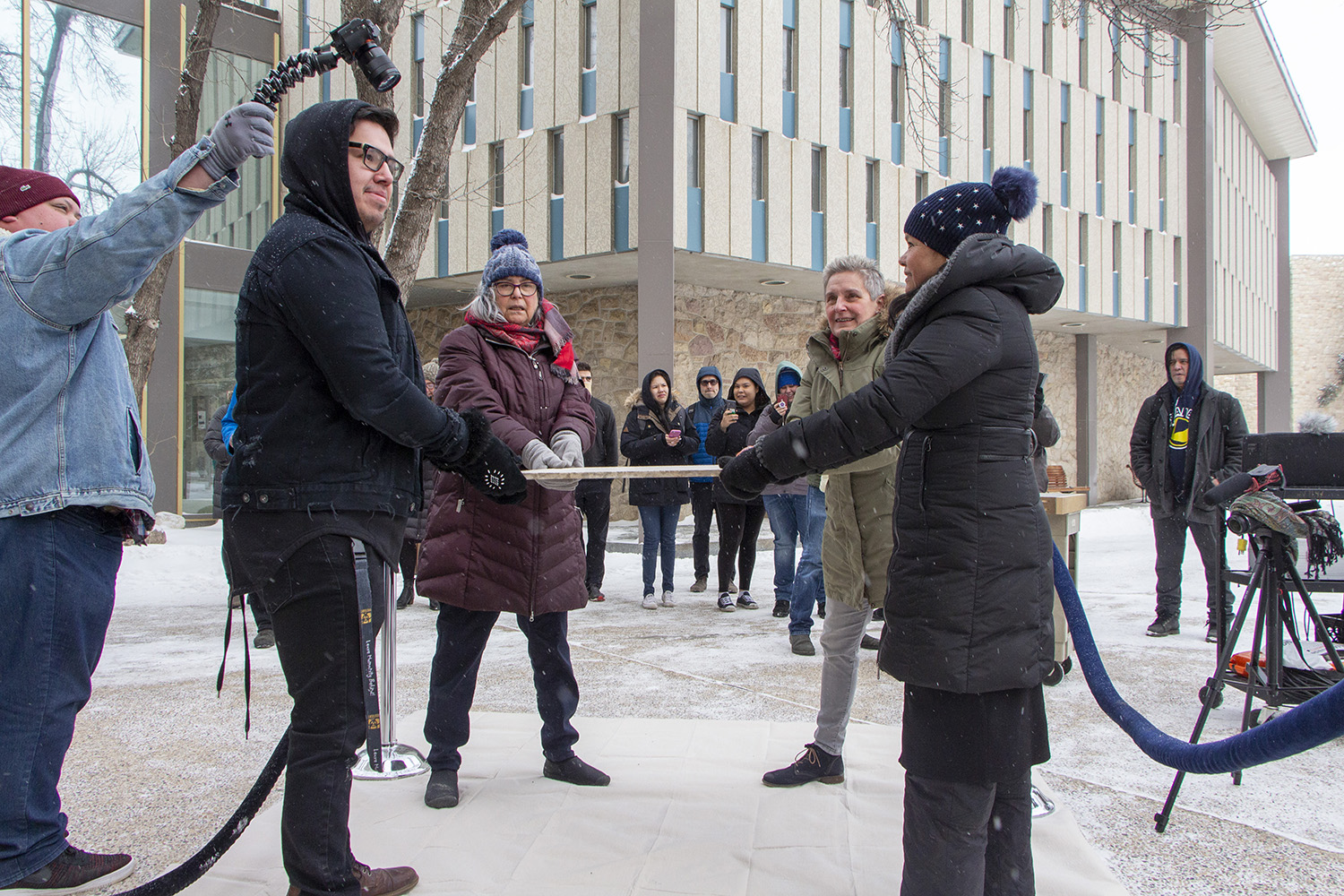
The creation of the piece began by breaking a slab of Tyndall stone, a symbol of USask’s physical architecture. Tyndall stone—a type of dolomitic limestone from Manitoba—is featured on many buildings throughout campus. For this art project, broken pieces of Tyndall stone will be integrated with beadwork as a performative and visual step toward reconciliation.
“Breaking the stone represents decolonization and the creation of space within the institution for Indigenous traditions, languages and ways of knowing,” said Hyggen. “Tyndall stone is representative of the university, beads are representative of Indigenous cultures and the material we will use to bond the beads and stone together—resin—represents the Indigenization process.”
The Beads and Stone project was officially launched with a kick-off event on Feb. 4 outside the Arts Building on the USask campus.
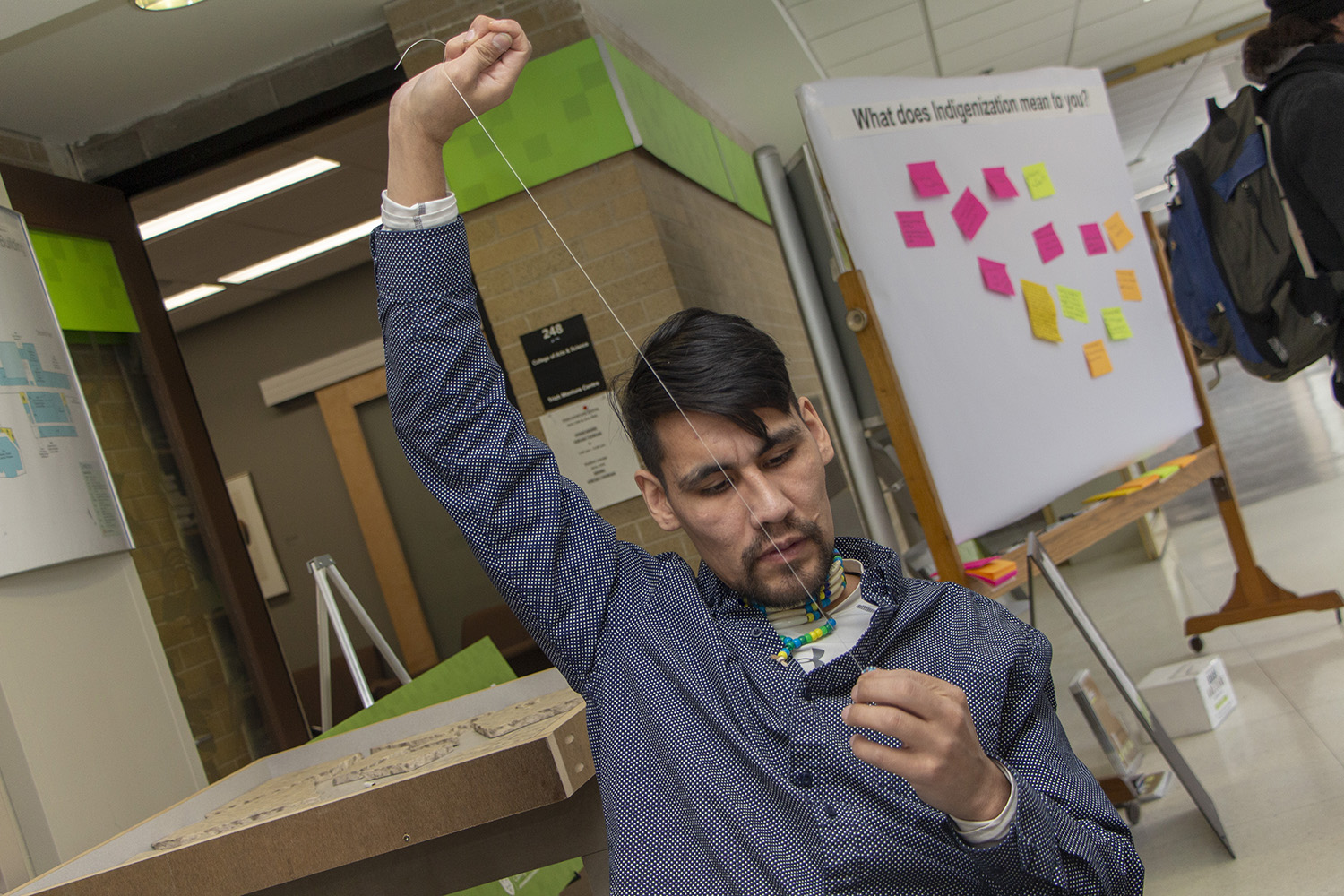
The event, which included speeches from the artists, Elders, an Indigenous student and members of USask leadership, followed a pipe ceremony and a feast at the nearby Gordon Oakes Red Bear Student Centre.
“Our college is the home of the arts on campus, and this is a very important role,” said Dr. Peta Bonham-Smith (PhD), dean of the College of Arts and Science. “The arts can help us start conversations about important social issues. They challenge our ideas and push us to do better. The arts are also inclusive and collaborative. They promote understanding and help us build relationships. That is what I hope the Beads and Stone project will achieve.”
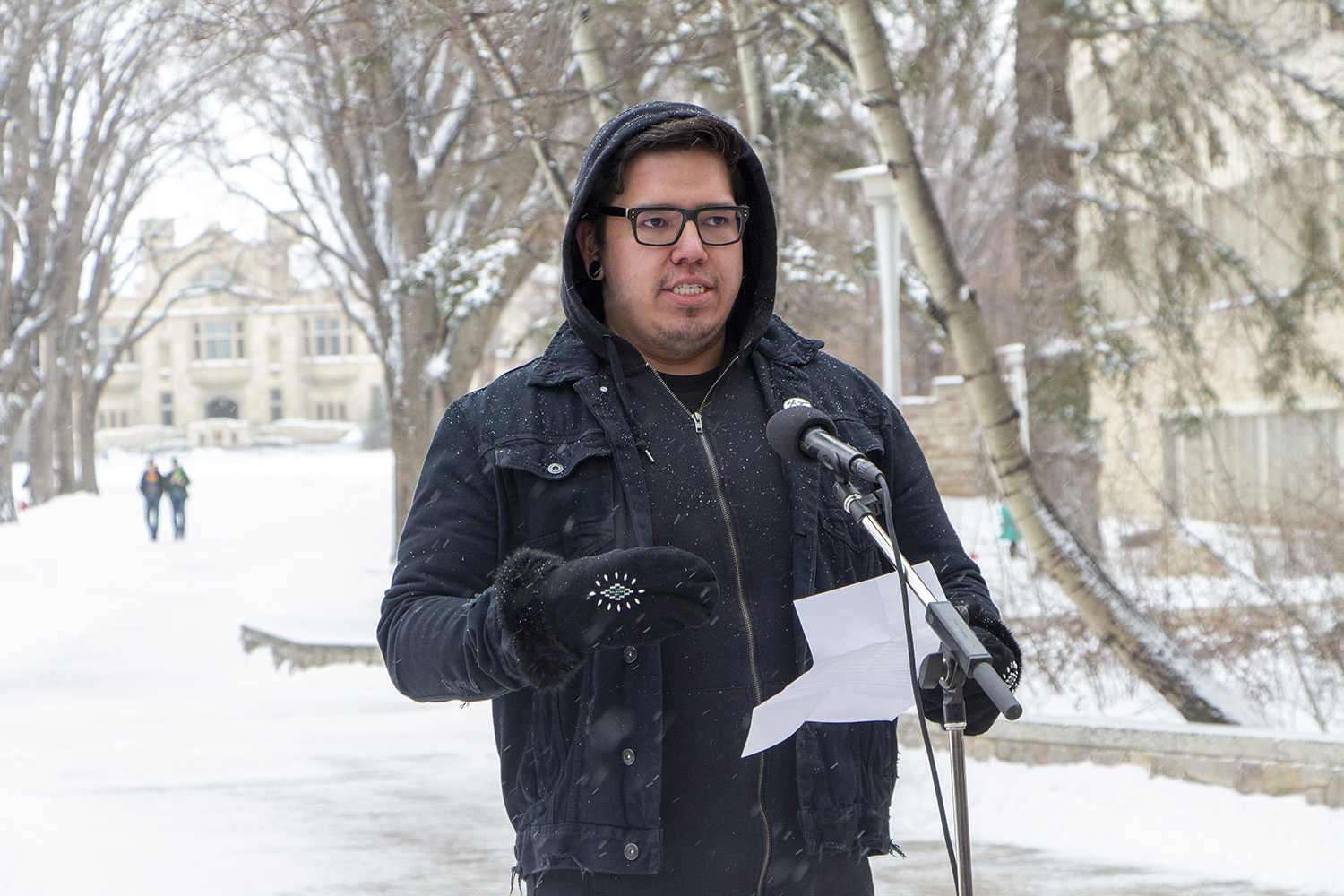
Throughout Indigenous Achievement Week, Cuthand and Hyggen will be situated at the top of the ramp in the Arts Building. They encourage everyone to take part in the beading and are excited to collaborate with and mentor students in the College of Arts and Science’s Indigenous Student Achievement Pathways (ISAP) program throughout the week.
Filmmaker Marcel Petit will capture the project kick-off and the week’s events, while poet Zoey Roy will create a poem to be included with a soundscape as part of the film.
“A cornerstone of the College of Arts and Science’s new strategic plan to 2025 is to Indigenize and decolonize the college by addressing racism and promoting understanding,” said Dr. Dirk de Boer (PhD), acting vice-dean Indigenous in the College of Arts and Science. “Supporting the creation of interactive art projects such as Beads and Stone can help us move toward reaching our goals.”
Many students, faculty and staff have already been introduced to beading at USask in recent months. Since last summer, Cuthand has been mentoring people on campus in a partnership consisting of the Gordon Oakes Red Bear Student Centre, Wanuskewin Heritage Park and the new Indigenous Artist-in-Residence program of the University of Saskatchewan Art Galleries.
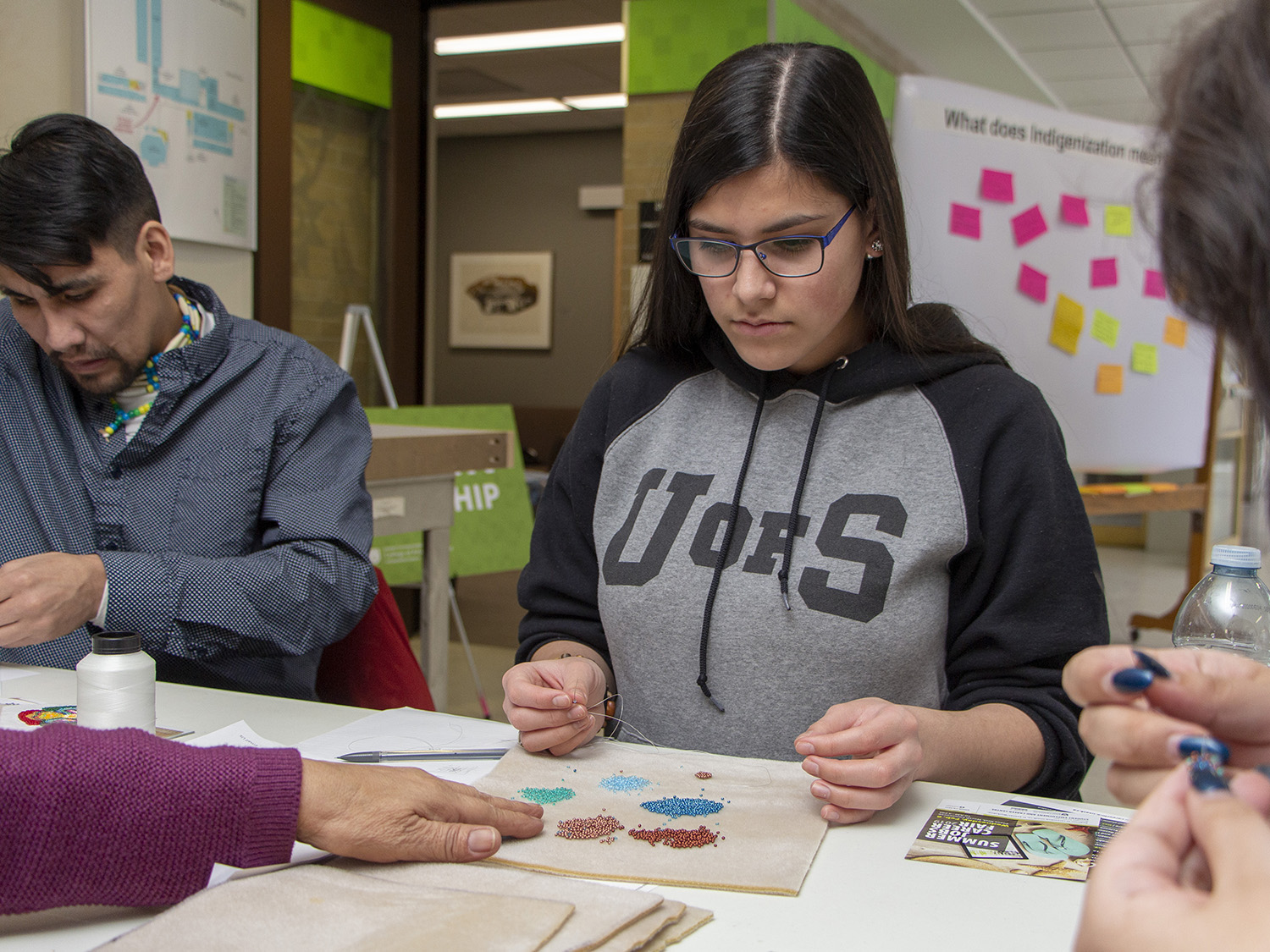
Cuthand—who was recognized as one of the College of Art and Science’s Alumni of Influence in 2016—said the Beads and Stone project will provide the campus community with another opportunity to participate in beading and will offer insight into the creation of abstract art. Participants will also have the opportunity to explore the topics of Indigenization, decolonization and reconciliation while working with some “beautiful and shiny” art materials.
“We want people to bead with us and to contribute their work, and their voices, in celebration of new spaces for learning and leading,” Cuthand said.
The Beads and Stone project is supported by the University of Saskatchewan Art Galleries, the Indigenous Student Achievement Pathways program in the College of Arts and Science and the College of Arts and Science’s Office of the Vice-Dean Indigenous.
“Created by this unique group of artists, Beads and Stone gives voice and substance to a vision for a new kind of university in an extraordinary and compelling image,” said Jeremy Morgan, interim managing director of the University of Saskatchewan Art Galleries.
